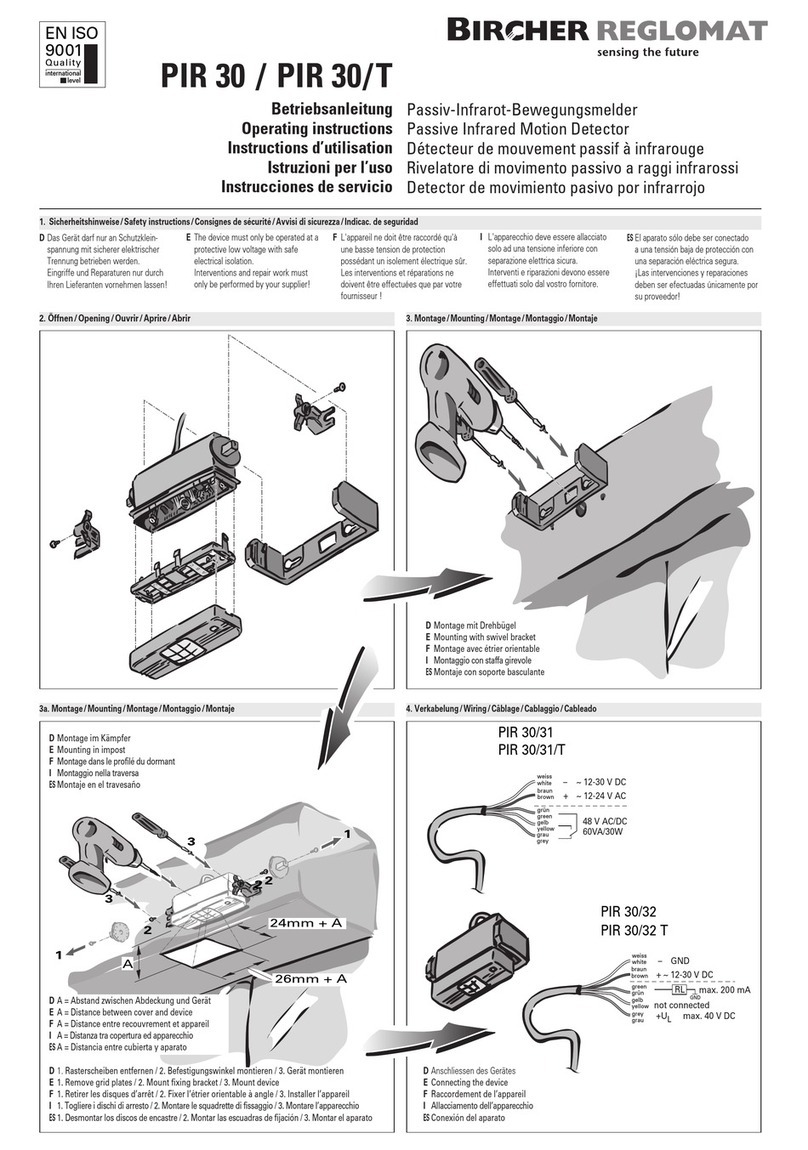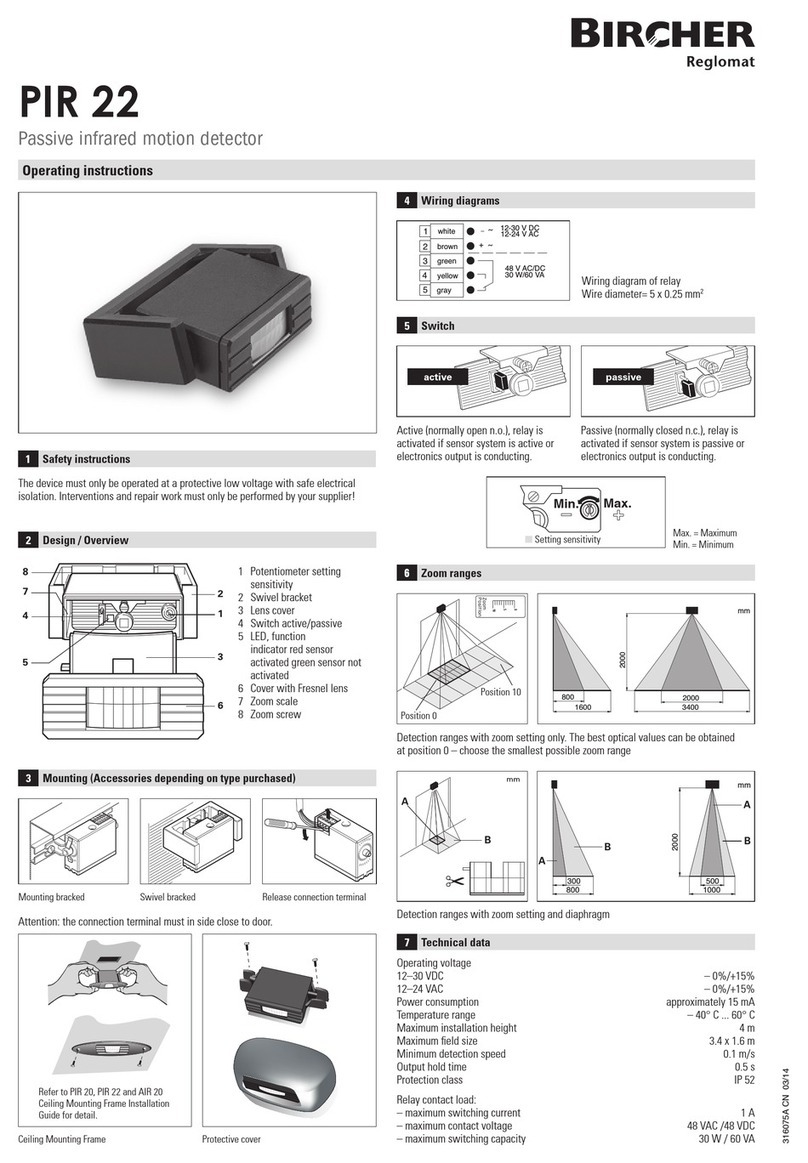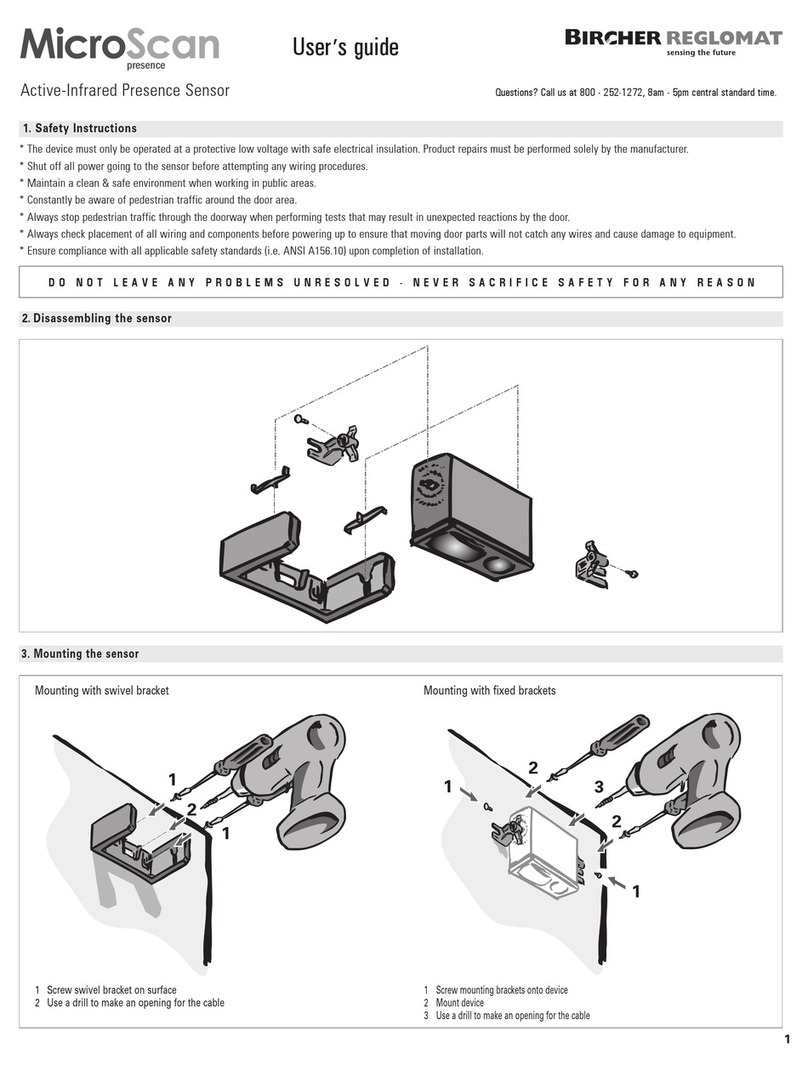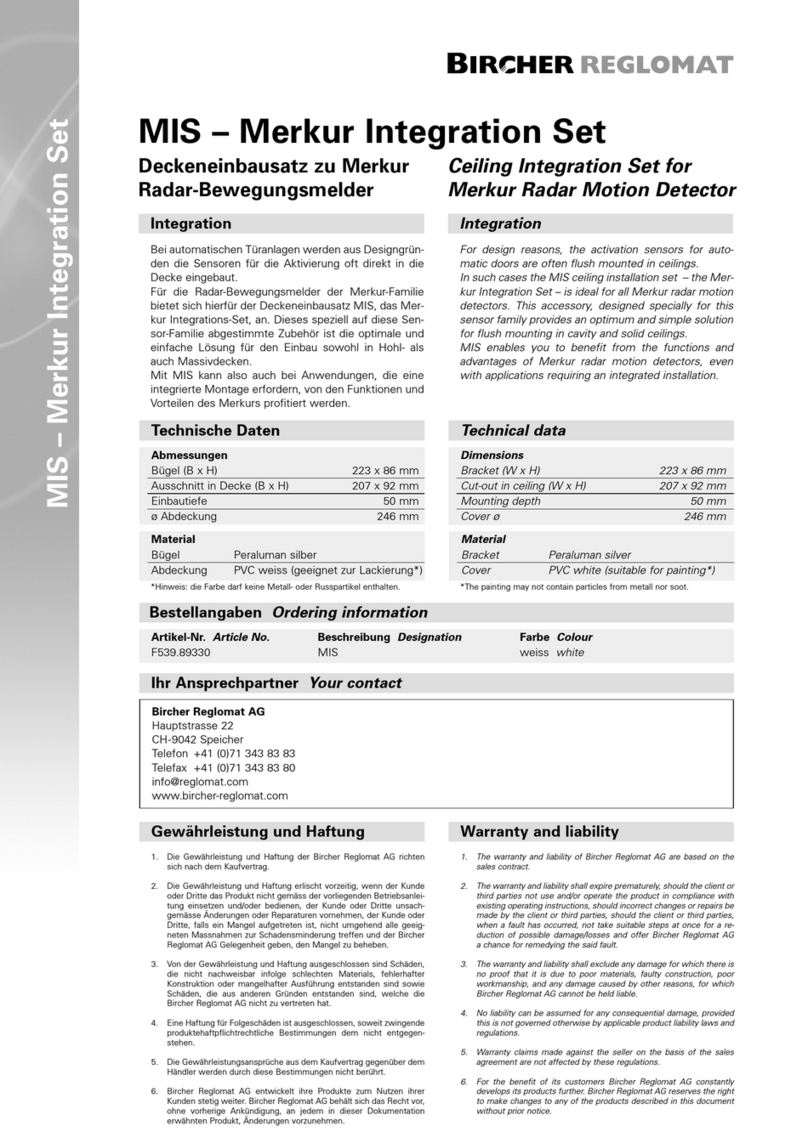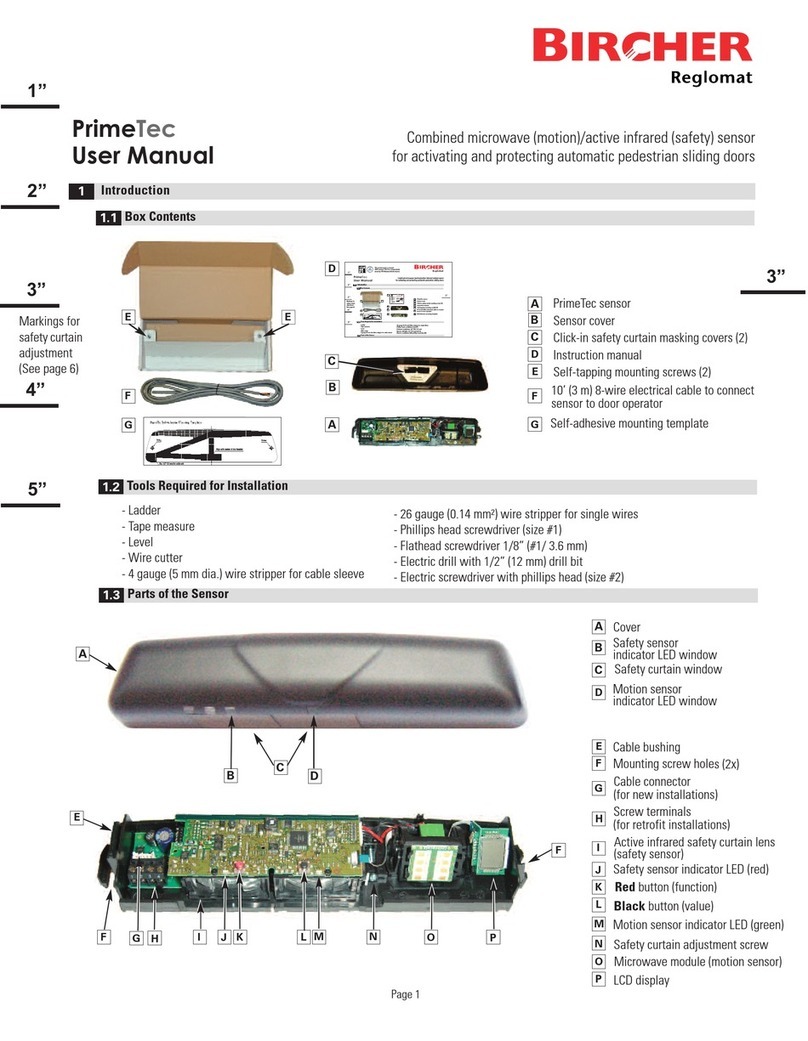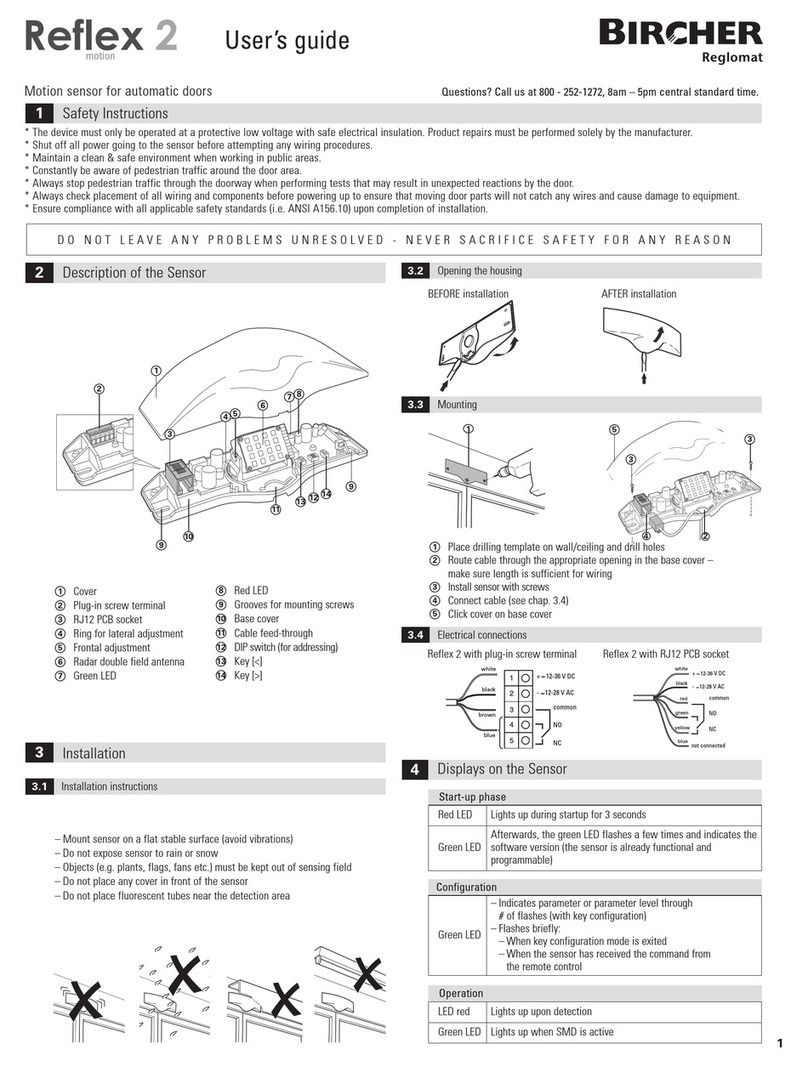
ounting the rubber profile
4.2
oisten «click-fit foot» rubber profiles with a solution of soapy water and press into the alumi-
nium profile (do not pull in).
To ensure orre t fun tioning of safety edges with a li k-fit foot, after
mounting, the safety edge must be pressed in along its entire length to
make sure the foot engages properly in the aluminium bar.
Otherwise, the safety edge will onne t through. Che k fit of rubber profile
in aluminium strip.
Final checks
4.3
Check the resistance of the safety edge with an ohmmeter.
Noti e: The overall safety of the machine and its protection systems
depends on the quality, reliability and correct connection of the interfaces.
Warning: Perform a final fun tional and visual he k of the safety edge. On e mounting is omplete, test the safety edge on
the obje t to make sure it fun tions orre tly. The prote tion system must also satisfy the for e, overtravel and sensitivity
requirements of the standards appli able in the relevant ountry.
indestens jährliche Funktions- und Sichtkontrolle der Sicherheitsleiste durch ausgebildetes Personal.
The safety edge is maintenance-free. If damage occurs, such as a brittle or torn rubber profile, non-tight switching chamber, insuffi ient onta t
resistan e in the a tivated state (>500 ohms) or similar, the safety edge must be replaced immediately. Please request a new one, remembering
to state the product designation.
Check the resistance of the safety edge with an ohmmeter, referring to the table above.
Maintenan e
5
6Conta t details
Manufacturer:
Bircher Reglo at AG
Wiesengasse 20
CH-8222 Beringen
Switzerland
www.bircher-reglo at.co
Press in profile at both ends
Work from outside inwards
Glueing on the end caps
3.3
ES-KLEBER
Attach end caps by applying ES-KLEBER to the points shown and hold in place, applying pressure across the whole area, for approx. 10 seconds.
Note: No end caps on ELE040/081 and ELE040/105
Attaching aluminium strip
4.1
Attach aluminium strip to object with ountersunk head s rews. Recommended hole
spacing 300 mm. ake sure aluminium strip is securely attached to ends of safety edge.
You may have to make holes for the cable to exit through.
NB: In the case of 2-panel systems, the two profiles should be aligned facing each other.
The same applies to any counter sealing profile.
Noti e: If possible, avoid routing the cable through the aluminium profile as it may press
against the switching chamber.
T-foot rubber profiles should be pulled into the aluminium.
Any burrs on the aluminium profile must be removed first.
End pie es
ENEH-8
ENES-8
ENEH-0
ENES-0
ENEH-K...
ENES-K...
8.1 - 8.5 kΩ∞ ∞
< 200 Ω< 200 Ω< 200 Ω
Mounting the safety edge
4
xxxxxxA02/11
